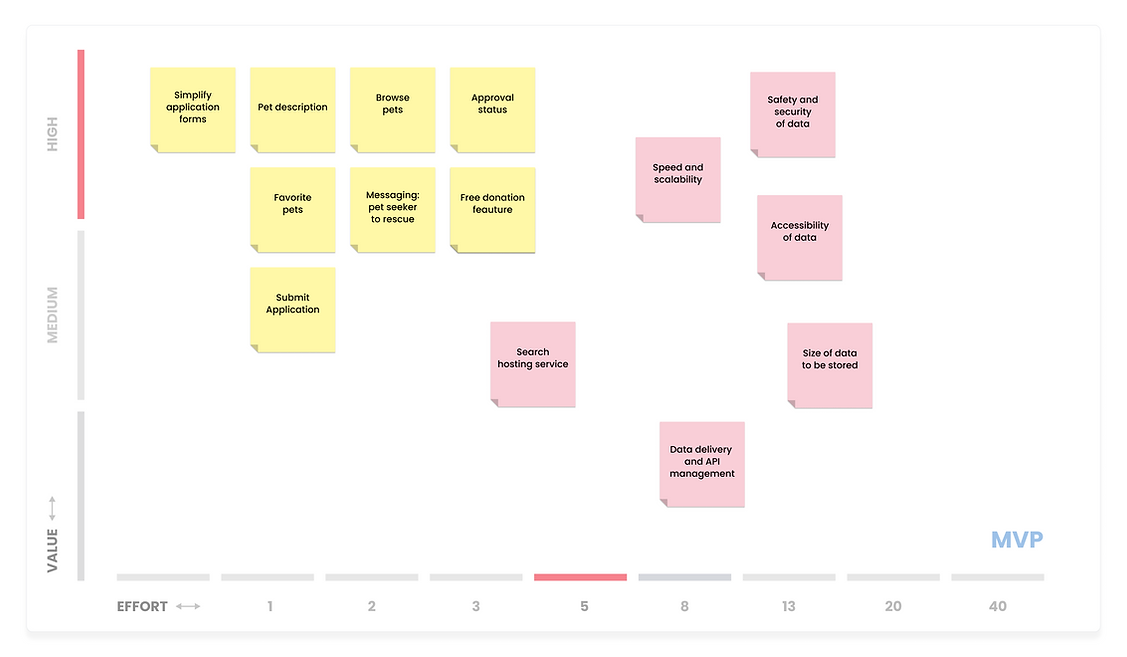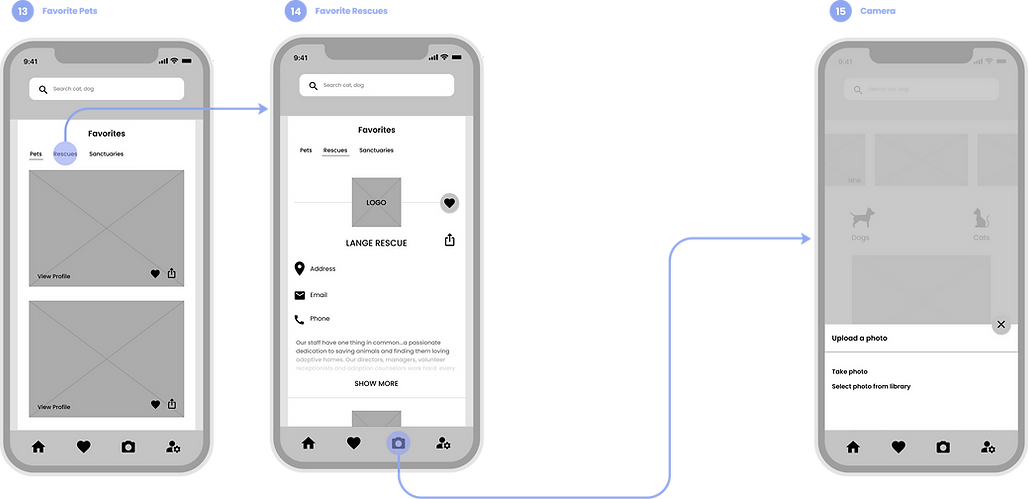HEURISTIC EVALUATION F&B ACADEMY
HEURISTIC EVALUATION F&B ACADEMY
HEURISTIC EVALUATION F&B ACADEMY


Client: Cambusa, Antigua
Design tools: Sketch, Invision Studio, Photoshop
Client: Cambusa, Antigua
Design tools: Sketch, Invision Studio, Photoshop









Case Study
General Assembly 2018 (school projects)
My design process
I am excited that you want to learn more about my approach and how I applied UX thinking to
the world of animal rescue.

Summary
Owning a pet is a huge responsibility. Often people will make a decision to get a pet without
preparing themselves for the ownership responsibilities to keep it safe, or without considering
the time commitment necessary. The result is thousands of abandoned, surrendered and
breeding pets; many of these animals will end up in shelters.
If they are lucky, they will find responsible forever homes, but this is not always the case.....
The challenge
Here are statistics any pet owner or possible pet owner should know. Homeless animals
outnumber homeless people 5-1. In order to give every pet in shelters and on the streets a
home, every human being in the country would need to adopt seven homeless pets.
This astonishing reality is primarily due to the lack of population control. Most strays are never
spayed or neutered and when they breed, their offspring are not spayed or neutered, and so on.
In fact only about 10% of animals received in shelters are spayed or neutered.

Online survey, questionnaire example
A few years ago, I adopted two cats from a shelter in Los Angeles. The people who worked at
the shelter were amazing. I remember a staff member telling me how hard it was to work with limited resources and very little publicity.
However, as much as I loved adopting my cats from them, the whole adoption process was tremendously complicated and lengthy.
Story time
No matter how kindly a breeder treats his or her animals, as long as cats and dogs are dying
in animal shelters and pounds because of a lack of homes, no breeding can be considered
responsible. All breeders fuel the animal overpopulation crisis. Approximately 7.6 million
cats and dogs enter shelters every year; only thirty percent of these animals are adopted.
It is unarguable that shelters want to save animal's lives. Ultimately, this is their main goal.
However, strict adoption rules and uncontrolled breeding, are the main causes of the increased
number of euthanizations performed every year and the small percentage of animals being
adopted.

I set up an online survey, a feedback form, and a way for the pet owners to add any comments
they wanted. I wanted to find out where they got their pet; I was curious to learn how their
experience with the adoption process would compare to mine.
I gathered a tremendous amount of information from my online survey. It was interesting to
learn that so many respondents used breeders or even Craigslist to adopt their pets.
Additionally, when trying to adopt, the majority of people had a bad experience. Only four percent of people used a pet adoption app. No one adopted through rescue groups or
animal sanctuaries.
Story time 2
The estimated number of rescue groups and animal sanctuaries in the U.S. is 10,000. These are
all nonprofit volunteer based organizations dedicated to rescuing dogs and cats from high kill
shelters. They operate through a network of volunteers and foster homes across the country.
Their efforts are funded by contributions from compassionate people and organizations who care
and want to help one pet at the time.
The solution
My goal is to design a compelling mobile app that helps finding adoptable cats and dogs. I am
looking to create the fastest and safest route in between rescue groups, animal sanctuaries
and prospective adopters.

Severity rating: 0 = I don't agree this is a problem 1 = Cosmetic problem only 2 = Minor usability problem 3 = Major usability problem 4 = Usability catastrophe
The majority of people used Pet Finder and Furry Friend Finder. As a first step, I performed an heuristic evaluation of these two apps following the Jackob Nielsen's 10 general rules of thumb.
My goal was not only to discover their usability issues, but also to identify what they were offering, explore their weaknesses and find opportunities to innovate and stay ahead of my competition.

Competitive Analysis
This competitive analysis told me where my competitors were falling short; which helped me to
identify a few areas of opportunity. As an example, none of these apps were able to connect directly
the user to any rescue or animal sanctuary. Additionally, they were all charging a non-refundable application fee.

Affinity Mapping, key insights example
The next step was to organize all the information I gathered from my online survey and feedback
form into clusters. My objective was to empathize with my users, and to become aware of possible
usability issues and design challenges.

User Persona, the adopter
Creating a user persona gave me a good visual representation of who my user was. Designing
this template allowed me to understand my target market and to tailor my design decisions
entirely to my user needs.

Journey Map, Clara
The journey map detailed above, gave me a clear visualization of Clara's thoughts and actions
throughout the entire adoption process; this allowed me to empathize even more with the needs
of my user, understand her frustrations and discover opportunities for my design solution.
Minimum Viable Product
I was now able to come up with a list of key features for my app. I prioritized features based on
their level of technical complexity (how long it would take the dev team to complete each feature)
and the feature's value from both a business and user standpoint.

Prioritization Matrix, diagram example
Ideation
I started out brainstorming some ideas for different screens. I couldn't define what type of information
would need to be included when applying for a pet, so I relied on follow-up interviews and card
sorting to determine how to prioritize relevant data.

Hand sketch, iOS screens example
Wireflow
I tested the initial wireframes with eight users. They loved the personalized search feature where
the pet seeker is able to upload a video presentation or link his/her profile to his/her social media
accounts (screens 1 and 5).




Each pet had their own profile page that was linked to and from a pet overview, with search and
sort functionality. Each profile included a biography, picture, and the rescue's contact information.
The adopter can apply for a pet, donate to the rescue, or choose to do both. He/she can favorite
and share profiles and the rescue information with other people (screens 11 to 14).
The camera feature allows the user to take pictures of cats or dogs, and automatically have results delivered for similar pets within the app's inventory (screens 14 and 15). He/she can chat with the
rescue before formally applying (screens 6,11 and 12).
High Fidelity Prototypes






What did I learn?
I learned that user research is so very important and should always precede UX strategy because it
helps eliminate design assumptions from the design process, that I enjoy wireframing for hours and
conducting field studies. Ultimately, I learned that performing a usability test is not as easy as it seems.